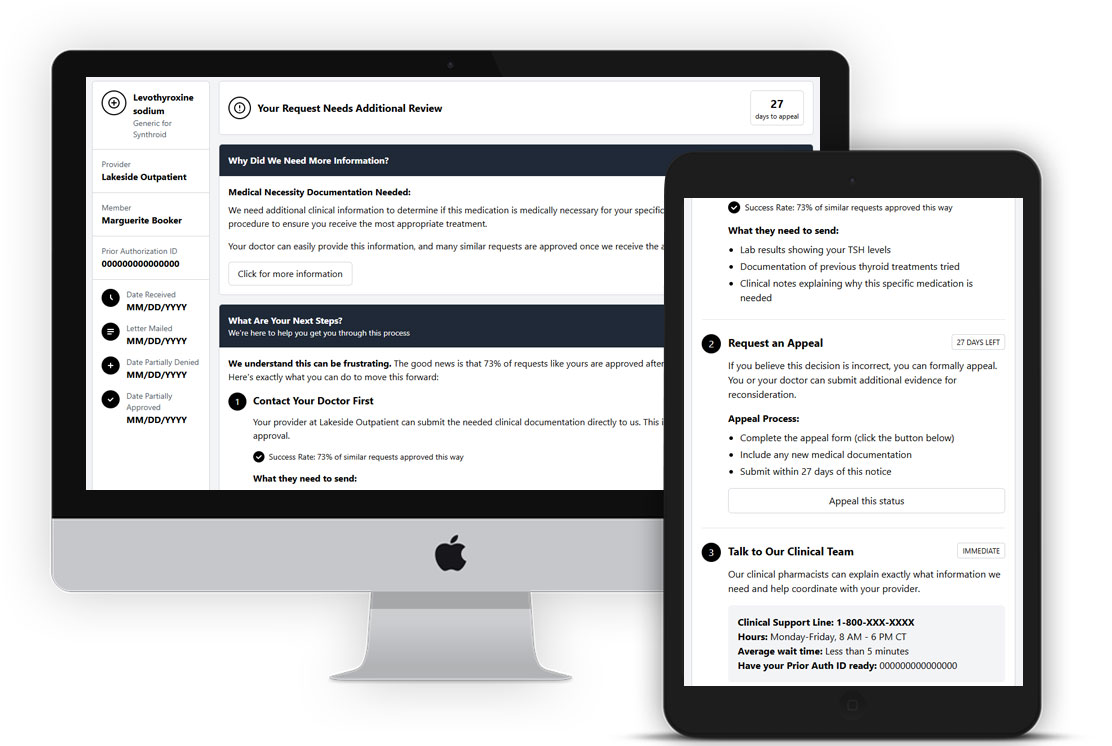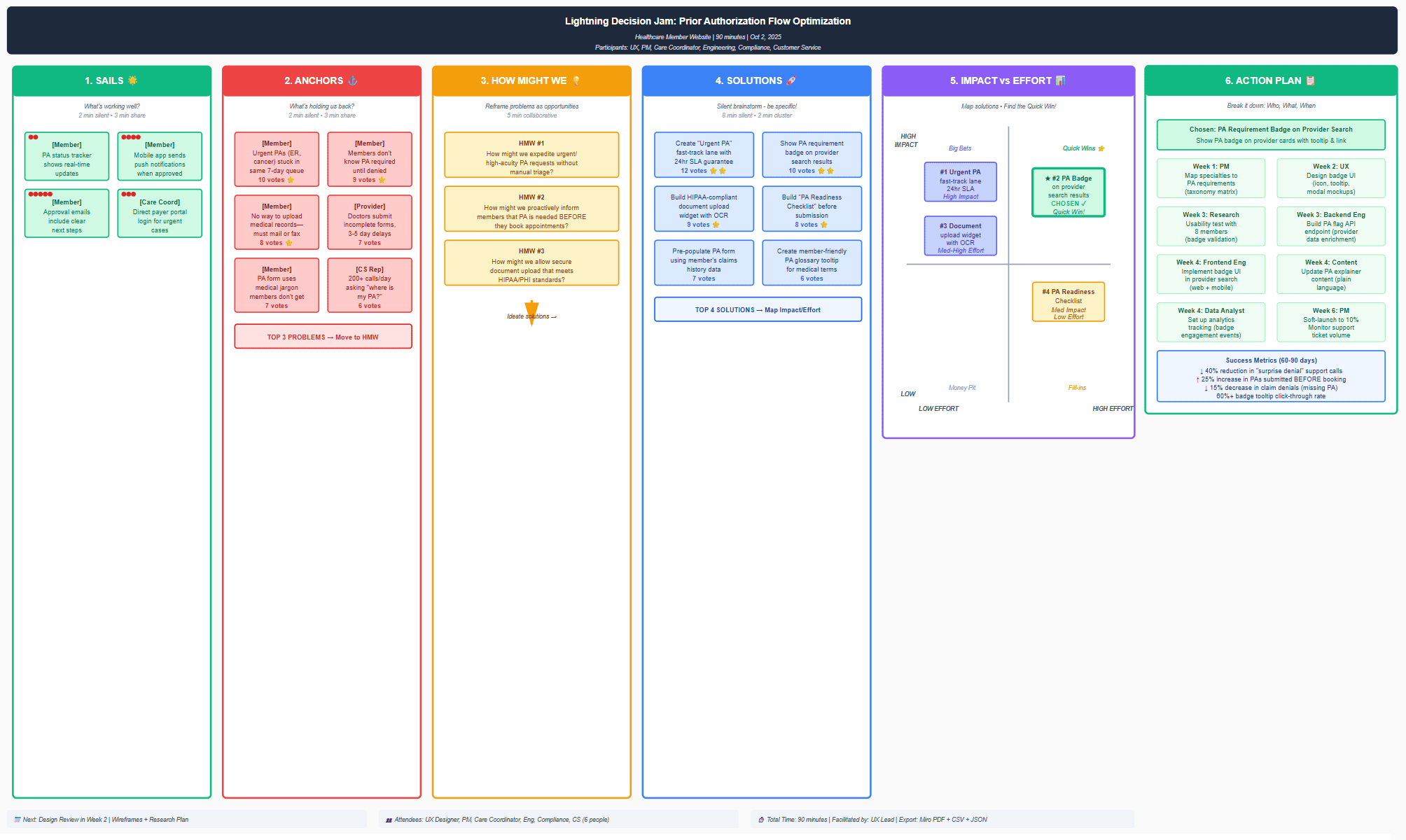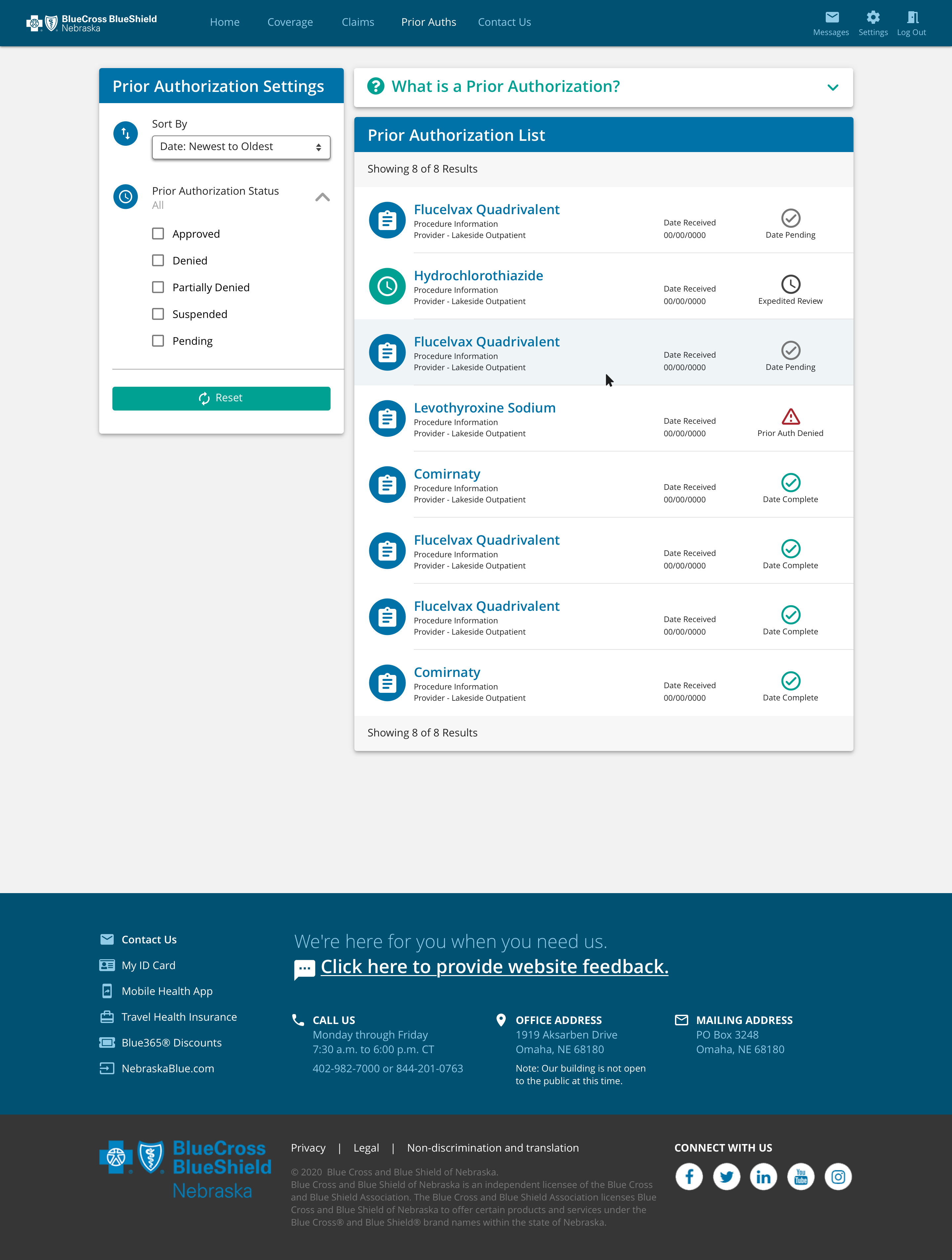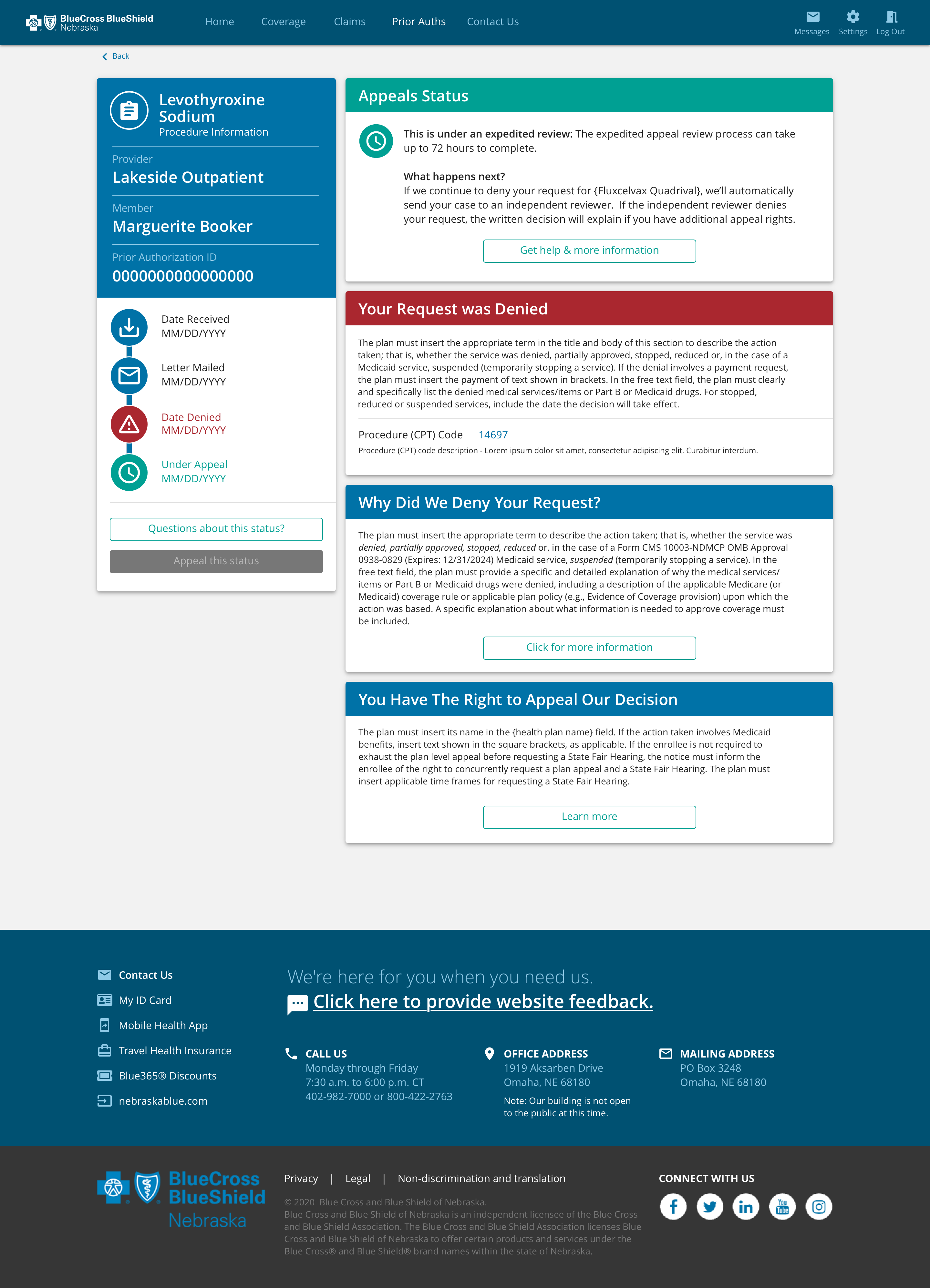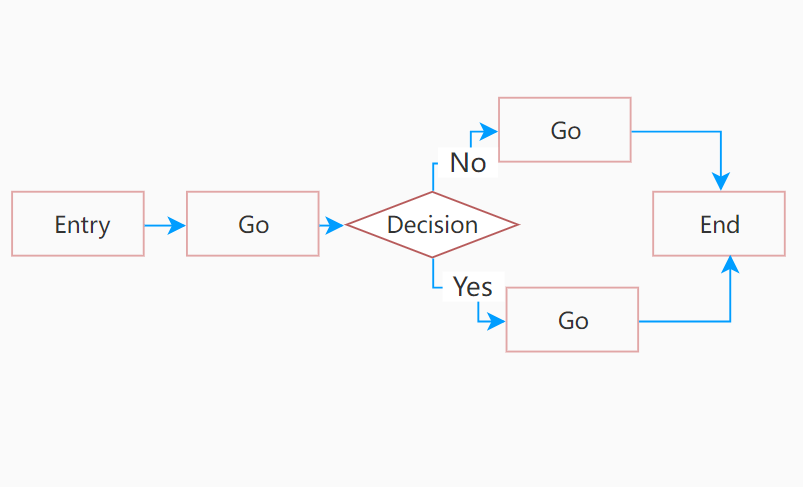Medicare Advantage Prior Authorization Redesign
- Delivered on time for critical MA product launch
- Implemented AI to accelerate research under constraints
- 96% drop-off → 80%+ usability improvement
- Lightning Jam workshops aligned teams in 1-2 hours
- Led shift from paper/PDF to digital-first workflows

